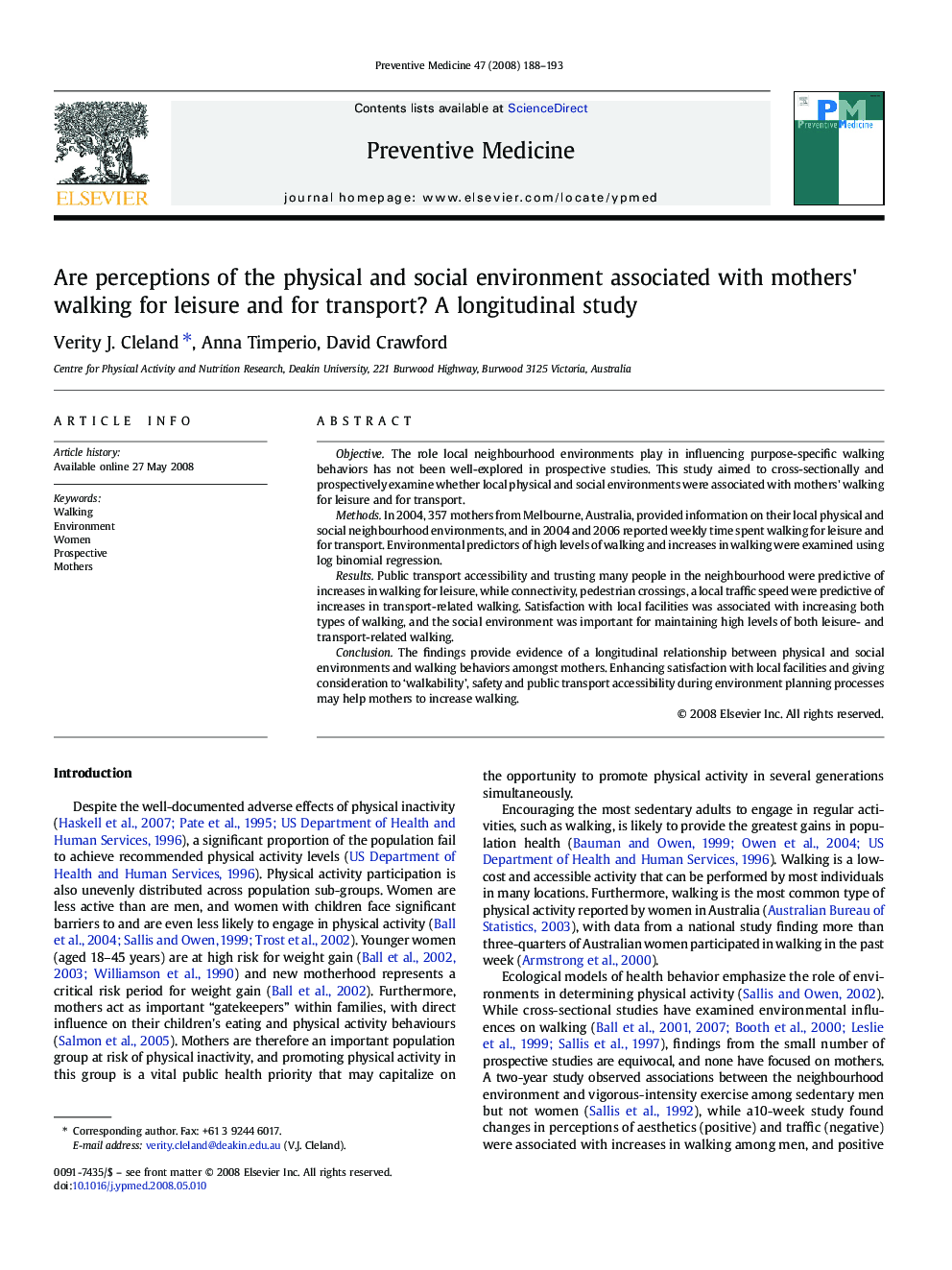| Article ID | Journal | Published Year | Pages | File Type |
|---|---|---|---|---|
| 3101536 | Preventive Medicine | 2008 | 6 Pages |
ObjectiveThe role local neighbourhood environments play in influencing purpose-specific walking behaviors has not been well-explored in prospective studies. This study aimed to cross-sectionally and prospectively examine whether local physical and social environments were associated with mothers' walking for leisure and for transport.MethodsIn 2004, 357 mothers from Melbourne, Australia, provided information on their local physical and social neighbourhood environments, and in 2004 and 2006 reported weekly time spent walking for leisure and for transport. Environmental predictors of high levels of walking and increases in walking were examined using log binomial regression.ResultsPublic transport accessibility and trusting many people in the neighbourhood were predictive of increases in walking for leisure, while connectivity, pedestrian crossings, a local traffic speed were predictive of increases in transport-related walking. Satisfaction with local facilities was associated with increasing both types of walking, and the social environment was important for maintaining high levels of both leisure- and transport-related walking.ConclusionThe findings provide evidence of a longitudinal relationship between physical and social environments and walking behaviors amongst mothers. Enhancing satisfaction with local facilities and giving consideration to ‘walkability’, safety and public transport accessibility during environment planning processes may help mothers to increase walking.
